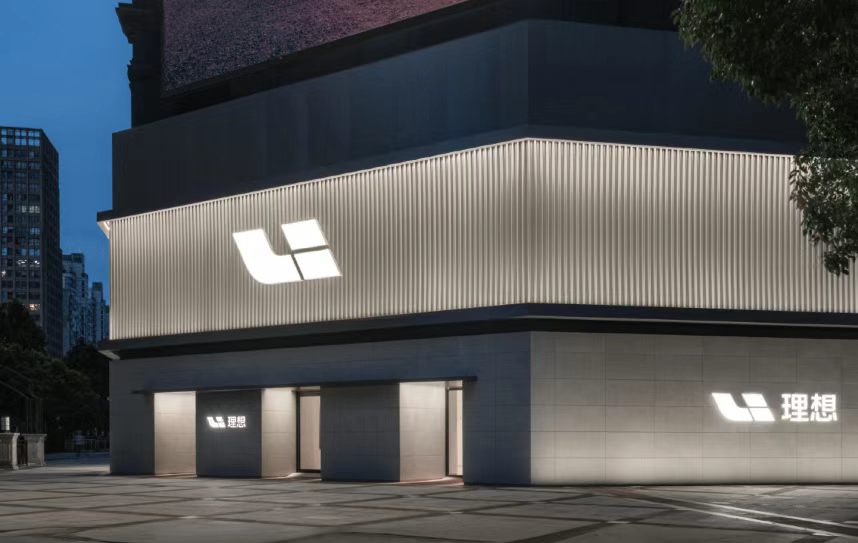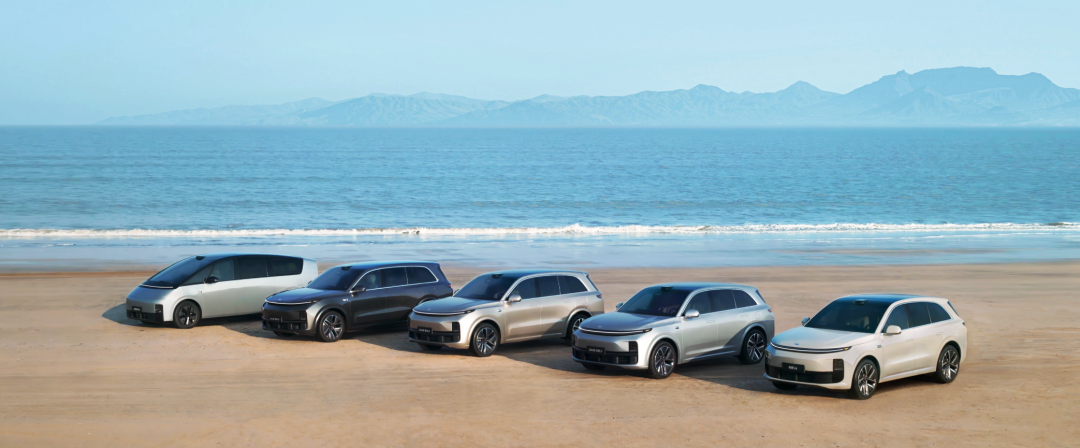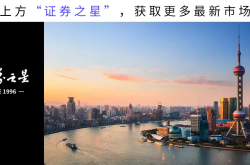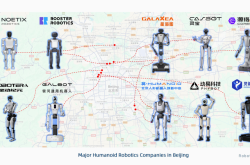Market Value Halved: Li Auto Faces Mounting Pressures
![]() 04/15 2025
04/15 2025
![]() 525
525
Introduction: As Li Auto progresses, it must confront Huawei's Hongmeng Smart Mobility in its core business areas while enduring BYD's fierce competition. Additionally, it must remain vigilant against surprise attacks from competitive auto brands such as Xiaomi, Lynk & Co, Zeekr, ARCFOX, and Leapro. The pressure on Li Auto is immense.

Written by Lu Yan, produced by Li Shi Business Review
1
Over the past year, the valuation of numerous Chinese tech companies has undergone a significant reassessment. From internet giants like Tencent, Alibaba, and Meituan to new energy vehicle leaders such as BYD, CATL, and Geely Auto, their share prices have surged. However, Li Auto's share price has remained subdued.
According to public data, Li Auto's current share price stands at $23.79 per share, nearly halved from $46.44 a year ago. This reflects both the company's current performance and investors' expectations for its future prospects. From these perspectives, Li Auto is far from being "ideal".
Firstly, Li Auto's 2024 financial report revealed total revenue of 144.5 billion yuan, a 16.6% year-on-year increase; however, net profit was 8 billion yuan, a 31.9% year-on-year decrease. Behind this slight revenue growth but stagnant profit lies a significant decline in sales of Li Auto's three high-end models, L7, L8, and L9. While the robust sales of the new model L6 compensated for this decline, the lower price point of L6 could not fully offset the profitability hit from the reduced sales of the other models.
Secondly, as we enter 2025, Li Auto faces even greater performance pressures. Not only are sales of L7, L8, and L9 continuing to be squeezed by competitors, but the volume model L6 will also start to encounter substantial pressure, making it challenging to maintain the high performance achieved in 2024. Additionally, the two pure electric SUV models that Li Auto plans to launch this year are entering a highly competitive market, and investors have low expectations for their actual sales.
2
Prior to facing its current growth pressures, Li Auto was, for a long time, the most successful enterprise among China's new car-making forces. It not only continuously launched popular models but also pioneered large-scale profitability. The core elements of its success can be summarized into three main points.
Firstly, Li Auto did not blindly follow Tesla's pure electric route but pragmatically chose the extended-range hybrid route, combining oil and electricity. This allowed it to reach a broader user base. In fact, besides Tesla and BYD, no pure electric vehicle company has been able to achieve large-scale sales. NIO and XPeng have gradually fallen behind Li Auto, largely due to their excessive focus on pure electric vehicles with a smaller market size.
Secondly, Li Auto successfully avoided the fiercely competitive mid-size and compact car markets, choosing instead to focus on the mid-large and large SUV markets. Historically, these markets were dominated by luxury brands BBA (BMW, Benz, and Audi). Despite significant market demand, BBA's exorbitant prices deterred many consumers. Li Auto launched the L7 and L8 mid-large SUV models and the L9 full-size SUV model at prices less than half of those of BBA, successfully attracting consumers who love large-space vehicles but were previously deterred by the price.
Thirdly, Li Auto has demonstrated impressive product performance in details such as appearance, interior, and configuration. For instance, Li Auto led the trend of televisions and large sofas in the new energy vehicle sector.
These three factors enabled Li Auto to successively create popular models such as Li ONE, L9, L8, L7, and L6. The only unsuccessful product, Li MEGA, a large pure electric MPV model with a peculiar appearance, deviated from the three core success factors mentioned above.

Thanks to the success of these models, Li Auto's sales, revenue, profit, and market value soared, successfully overtaking NIO and XPeng to become the hottest new car-making force in China. However, as two other powerful companies began to intersect with Li Auto in terms of products, this significantly hindered Li Auto's growth momentum. These two companies are Huawei and BYD, recognized as two of the most outstanding in China's business community.
3
Huawei was the first to bring tremendous pressure on Li Auto.
In mid-2023, Li Xiang, the founder of Li Auto, publicly mentioned on Weibo that Huawei was causing trouble for Li Auto. He stated, "In the third quarter of 2022, the launch and operation of the AITO M7 directly crippled the Li ONE. We have never encountered such a strong opponent, and for a long time, we had no way to fight back." Li Xiang also said that Huawei's superior capabilities directly led to the sales collapse and premature discontinuation of the Li ONE, resulting in a loss of over a billion yuan in a single quarter and severely impacting the team, causing a significant number of product experts to resign.
The M7, the second model launched by the AITO brand, jointly created by Huawei and Thalys in July 2022, with a starting price of 319,800 yuan, 30,000 yuan lower than the Li ONE at that time, directly halved the sales of the Li ONE. Subsequently, Li Auto chose to fully learn from "Huawei". Li Xiang said, "Our management team bought no less than ten public books by Huawei each. We were amazed to discover that the painful problems we encountered in product development, sales services, supply manufacturing, organizational finance, etc., had been solved by them over a decade ago, or even two decades ago. Learn! Learn! Learn!"
In response to the AITO M7, Li Auto prematurely discontinued the Li ONE product line and subsequently launched three models, L7, L8, and L9, achieving a rapid recovery in sales and becoming the brightest black horse in China's auto market in 2023. However, what Li Auto did not anticipate was that entering 2024, the scenario of being hit hard by Huawei in 2022 would repeat itself.
At the end of 2023, AITO released a new version of the M7 with a more aggressive pricing strategy, starting at 249,800 yuan, 70,000 yuan lower than the comparable Li L7, leading to a resurgence in M7 sales, quickly overtaking those of the Li L7.
In addition to completely surpassing Li Auto in the mid-large SUV market, the AITO brand also brought tremendous pressure on Li Auto in the large SUV market. Before the launch of the AITO M9, the Li L9 was the sole star in China's large SUV market in terms of sales. However, after the launch of the AITO M9, which fully competes with the L9, the sales of the Li L9 began to decline rapidly, and the AITO M9 successfully topped the sales chart in China's large SUV market.
After the two main models, Li L7 and Li L9, were successively suppressed, Li Auto launched the smaller L6. With a starting price of only 249,800 yuan, the L6 significantly lowered the threshold for users, making it quickly become one of the most successful popular models in the industry, with monthly sales consistently maintaining above 20,000 units for multiple months. But the good times didn't last long, as Huawei's Hongmeng Smart Mobility released a directly competing model, AITO R7, targeting the Li L6, putting Li Auto under pressure once again.
For example, the monthly sales of the Li L6 remained around 25,000 units in the second half of 2024, while from January to March 2025, its monthly sales were 13,990 units, 13,160 units, and 17,197 units, respectively. During the same period, the sales of the AITO R7 were 11,422 units, 8,748 units, and 8,520 units, respectively, exerting tremendous pressure on the Li L6.
Next, the AITO brand under Hongmeng Smart Mobility will also launch a brand-new mid-large SUV model, the AITO M8, which will not only directly compete with the Li L8 but will also affect the sales of the Li L9 upwards and the Li L7 and Li L6 downwards. In this way, all four core models of Li Auto, L6, L7, L8, and L9, are suppressed by models under Huawei's Hongmeng Smart Mobility one by one. The helplessness of Li Auto is easy to imagine.
4
In addition to facing the troublesome Huawei, another unfavorable development is that BYD, the leader in China's new energy vehicle industry, is accelerating its layout in Li Auto's main market.
For a long time, BYD has focused on competing in the cost-effective market below 200,000 yuan. After gaining an absolute leading edge in that market, BYD began to make inroads into the high-end market above 200,000 yuan. For example, BYD's luxury sub-brand Denza recently launched the large SUV model Denza N9, which is superior to the Li L9 in terms of technology and configuration, but its starting price of 389,800 yuan is more price-competitive compared to the Li L9's starting price of 409,800 yuan, which is bound to further encroach on Li Auto's market in the large SUV segment.
As a brand with a price positioning close to Li Auto, Denza is not BYD's biggest killer move. The one that may have a greater impact on Li Auto in the future is the latest mid-large SUV Tang L launched by BYD's main brand. With a length of over 5 meters, the Tang L is similar in size to the Li L7 and Li L8, but thanks to its scale advantages and integrated supply chain advantages, its starting price of 229,800 yuan is not only much lower than the Li L7's starting price of 301,800 yuan but also lower than the Li L6's starting price of 249,800 yuan.
Although BYD's main brand is positioned as a cost-effective brand rather than a luxury brand, the Tang series is its most premium flagship product series in the SUV category. Therefore, BYD has not lowered its quality requirements for it at all. According to specific product information, despite its obvious price advantage, the Tang L's technological and product capabilities are not inferior to those of the Li L7 and Li L8. It will not only further erode the markets of the Li L7 and Li L8 but will also severely affect the sales of Li Auto's main sales model, the Li L6.
The Denza N9 and BYD Tang L are just the beginning of BYD's counterattack on Li Auto. Next, new models like the Denza N8, N7, and N6, which directly compete with the Li L8, L7, and L6, will be launched successively. It is also possible that BYD's Dynasty network will launch a larger SUV model, the Tang MAX, positioned higher than the Tang L. Meanwhile, BYD's Ocean network will also launch sister models of the Tang L and Tang MAX, the Seal 08 and Seal 09.
Overall, BYD, which is more focused on the new energy vehicle sector and has more obvious technological advantages, scale advantages, and integrated supply chain advantages, is a more competitive opponent than Huawei. With more advanced technology, higher configuration, and lower prices, this is a systematic competitive advantage that is difficult for all competitors to resist.
In 2025, Li Auto will have to confront Huawei's entanglement in its core business areas, endure BYD's fierce competition, and simultaneously be on guard against surprise attacks from competitive auto brands such as Xiaomi, Lynk & Co, Zeekr, ARCFOX, and Leapro. The pressure on Li Auto is immense.







